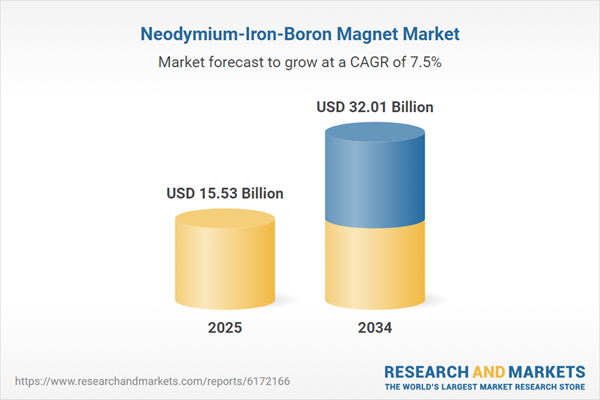The global neodymium-iron-boron magnet industry is driven by the flourishing energy harvesting sector. China is the leading country in the neodymium-iron-boron magnet market across the globe. This can be attributed to the high demand for these magnets from the key end-user industries in the region. China also enjoys a monopoly over the raw materials that are used to produce these magnets, which enhance the production of these magnets in the country.
Japan represents the second-largest market for neodymium-iron-boron (NdFeB) magnet across the globe, followed by Europe and the United States of America. The industry for the NdFeB magnet is further driven by the factors such as limited substitutes for neodymium magnets, rapidly expanding industrial applications, and the government initiatives to spur the use of green technologies in order to reduce the greenhouse gas emissions.
Market Segmentation
Neodymium-Iron-Boron (NdFeB) magnets are the strongest rare earth magnets, which are also affordable and cost-efficient. Even though NdFeB magnets have a lower curie temperature and are affected by oxidation, they provide the highest magnetic field strength and magnetic stability. Owing to this, they find uses in power tools, electric motors, and other products requiring strong, compact, and permanent magnets.The neodymium-iron-boron magnet market is divided on the basis of applications into:
- Automobile
- Electronics
- Power Generators
- Medical Industry
- Wind Power
- Others
The report also covers the regional markets of neodymium-iron-boron magnet like:
- North America
- Europe
- Asia-Pacific
- Latin America
- Middle East and Africa
Market Analysis
The global neodymium-iron-boron magnet market is driven by the rising high-level magnetic strength and miniaturisation of equipment in the existing and emerging applications. The market is further aided by the several government initiatives that are aimed to stimulate the use of green technologies so as to decrease the greenhouse gas emissions. Some of the other factors enhancing the industry growth of NdFeB magnet across the globe include their increasing and extensive applications in sectors such as defence, automotive, electronics, industrial, medical, and others, flourishing end-use industries, and limited substitutes. However, low Curie temperature, high cost, and propensity to undergo oxidation present some of the major constraints to the applications of NdFeB magnets.Competitive Landscape
The report gives a detailed analysis of the following key players in the global neodymium-iron-boron magnet market, covering their competitive landscape, capacity, and latest developments like mergers, acquisitions, and investments, expansions of capacity, and plant turnarounds:- Integrated Magnetics
- Arnold Magnetic Technologies
- Ningbo Relay Magnetics Co., Ltd
- Dura Magnetics, Inc.
- Others
Table of Contents
Companies Mentioned
The key companies featured in this Neodymium-Iron-Boron Magnet market report include:- Integrated Magnetics
- Arnold Magnetic Technologies
- Ningbo Relay Magnetics Co., Ltd
- Dura Magnetics, Inc.
Table Information
| Report Attribute | Details |
|---|---|
| No. of Pages | 152 |
| Published | August 2025 |
| Forecast Period | 2025 - 2034 |
| Estimated Market Value ( USD | $ 15.53 Billion |
| Forecasted Market Value ( USD | $ 32.01 Billion |
| Compound Annual Growth Rate | 7.5% |
| Regions Covered | Global |
| No. of Companies Mentioned | 5 |









